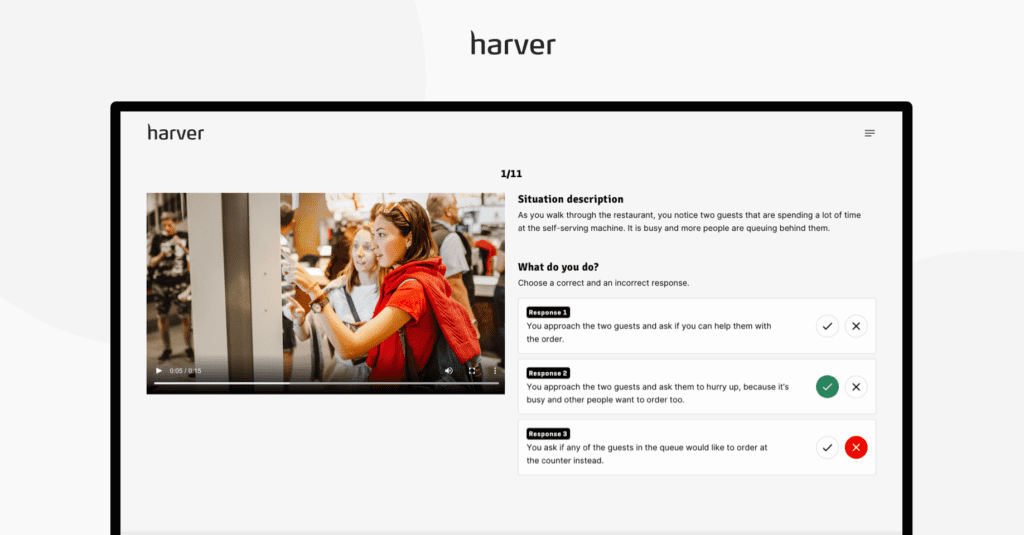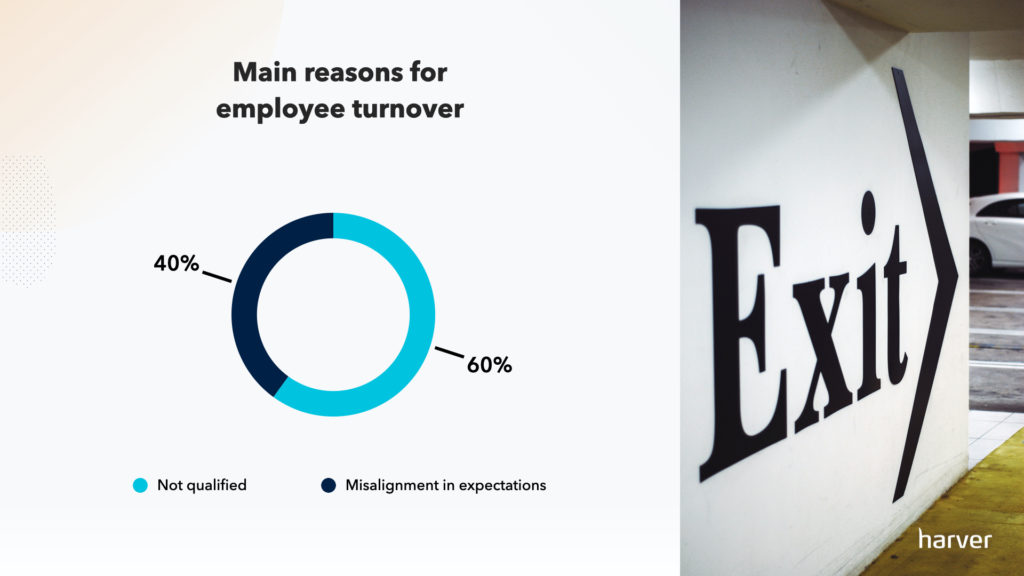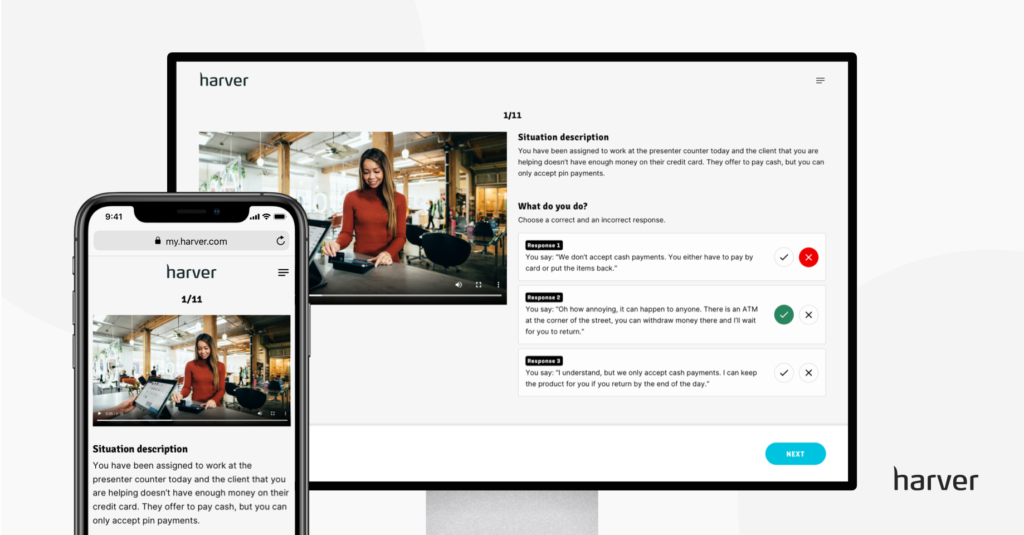It can be a real struggle to accurately represent what a job really is like before the new hire starts. This is especially true if companies are only trying to show the positive sides of the job they’re hiring for.
Yet, for a candidate, accepting a new job is never an easy decision. Even if the interview process goes perfectly, many candidates still experience a lot of hesitation. After all, what if the actual job is nothing like the interview lead on?
While we all want to attract top-level candidates excited about the open position, not letting them in on the challenges or struggles can lead to unhappiness and early attrition down the road. That’s why it’s always important to give new hires and job candidates a realistic view of what the job will be like.
The fastest, easiest and most digital way to do this is through a realistic job preview (RJP).
And that’s exactly why we’ll take a look at the basics of RJPs today. What are they, how can they help, and most of all, how can you add a realistic job preview to your hiring process yourself?
What’s in?
What is a realistic job preview?
A realistic job preview offers a realistic look into what a job is actually like – no sugar coating – showing both the positives and the negatives so the candidate can get a real feel for what skills and qualifications are needed on the job, as well as what a typical day would look like.
You’re letting your candidates know your expectations on the on hand. And they’re able to assess if this fits within what they’re looking for on the other. We’ve said it before – but a truly efficient recruitment process should be a two-way street. An RJP makes it so.
Also, establishing expectations ahead of time makes sure everyone is on the same page before the hiring process is complete and weeds out candidates that are not fully committed.
Before we get into why RJPs are important and how you can add them to your candidate selection flow, here’s a sample realistic job preview for the restaurant industry. This RJP comes in the form of a situational judgment test, but there are different types of RJPs that you can implement. We’ll detail them below.

Why are realistic job previews important?
Short answer: A realistic job preview ensures you’re getting the right candidate in your open position the first time around by letting candidates know exactly what the role they’re applying for entices.
Longer answer: When you’re not sugar-coating the position, new hires will know exactly what they’re agreeing to. This prevents confusion and unhappiness on the first day.
Think about it: Imagine you’ve just interviewed for what you believe is your dream job. The hiring manager, team, and CEO spent the entire interview process talking about the benefits, selling points, and key features of their open position.
And you were the perfect fit. You can’t wait to get started because you believe this will be a breeze. But then your first day comes. The work is nothing like they promised you, you’re expected to stay hours longer than you thought, and you can’t seem to really grasp what you’re supposed to be doing.
In other words, the jobs not quite what you thought. Misalignment of expectations is one of the main drivers for unhappiness amongst new hires after starting a new position.

While this may seem a bit dramatic, instances like this happen just about every day. Companies don’t fully disclose what a job is like and new hires are left upset that they agreed to a position that didn’t quite fit the image they had in their mind.
This leads to high employee turnover and negative reviews about the company, which in the long term, harms your employer brand. Moreover, you need to spend even more time trying to hire for the same position.
Needless to say, it’s pretty important that new hires know what they’re getting into when they start a new job. By being upfront about challenges and demands, candidates who aren’t interested in that level of work can leave the interview process earlier.
This helps you push the best candidates through while preventing you from wasting time on applicants who don’t fit your needs.
How does a realistic job preview work?
Think of a realistic job preview like a look behind the curtain. Typically, during an interview process, each party is on their best behavior. Everyone – company and candidate – is putting their best foot forward, trying to hide the little ticks that can make them difficult to work with.
And while you don’t want to go exposing all your dirty laundry, hiding everything creates an unrealistic image of who you really are.
By creating an RJP, applicants and candidates get to take a look at what it’s really like to work for your company. They get to see your inner workings, and they can choose to love you for them, or they can run for the hills.
Now that you have a comprehensive understanding of the ‘what’ and the ‘why’, it’s time for the really interesting stuff: the ‘how’.
Like what you see?
Don’t miss out. Subscribe to our quarterly digest to get the latest TA and TM resources delivered right to your inbox.
How to implement a realistic job preview into your hiring process
Right off the bat, there is not “one single way” to implement a realistic job preview into your hiring process.
RJPs come in many different forms, and with the current advancements in technology, it’s becoming easier than ever to give candidates a look inside your company. This allows candidates at every level to experience what their job might be like.
Additionally, companies can showcase their culture, expectations, and demands regardless of budget, location, or resources.
Let’s take a look at a few ways you can create RJPs.
1. Showcase the company culture
Videos are a great way to connect with candidates at every level of the interview process. Whether they’re a new applicant wanting to learn more about your brand or they’re reaching the end of the interview process, videos can give your potential hires a better understanding of what it’s like at the company.
This makes them a great – and cost-efficient – tool for creating realistic job previews. You can opt for company videos that showcase the work environment, include employee testimonials, or reflect your organization’s values.
Here’s, for example, how Hema transformed their candidate selection process by incorporating company videos to showcase their culture.
2. Use a situational judgment test or virtual job tryout
When you’re only interviewing local candidates, it can be rather easy to have your top recruits come in to check out the office. In this day and age, however, you’re probably not confining yourself to just one area of talent. This means you need to be able to reach individuals regardless of where they are in the world.
You can do this with an interactive online simulation – or – online situational judgment test.
How?
Well, you simply set up your assessment, provide some options, and fabricate a game-like experience for your candidate to follow through on.
I hear you thinking ‘great, but I’m not a programmer’. You don’t have to be!
There are recruitment technology tools out there that can help you set up these RJPs, one of them being – not to brag – Harver!
The platform has a drag-and-drop realistic job preview editor with which you can build an RJP in a matter of minutes! You can customize the sequence and brand it to reflect your brand guidelines, and you can mix the RJP with other assessments from our library, for a more extensive candidate selection process.
If you’re hiring for retail roles, for example, you can include multiple situational judgement tests in your RJP.

On the other hand, for contact center roles, you might prefer a live chat support simulation module, which offers candidates a virtual job tryout.
Experience our best-in-class Live Chat Assessment first-hand!
Perfect for remote hiring, our live chat assessment makes it easier than ever to hire live chat agents. Candidates experience the job, while you get actionable data to drive hiring decisions.
If you’d like to see our SJTs in action and learn how other companies are using realistic job previews to hire better and faster with Harver, you can book a demo below.
If you’d like to see how Haver can transform your hiring process,
book a demo here!
Next steps
Whenever you’re hiring someone new, you want to get the right person in the position as quickly and efficiently as possible. Unfortunately, you won’t be able to do this if you’re keeping crucial information from your applicants. If you want new hires to be happy in their new jobs, you need to show them exactly what you’re looking for.
Using realistic job previews, you can ensure that both you and your job candidates are on the same page throughout the entire hiring process. When they finally start a position, they’ll know just what to expect – increasing their job happiness and reducing your employee turnover.
If you’d like to see Harver’s RJPs in action, you can book a demo below.
Ready to transform your hiring process?

